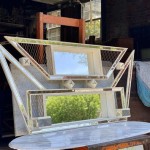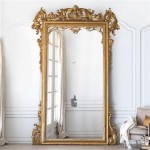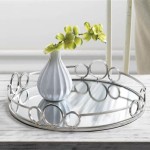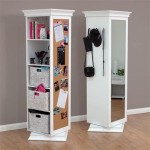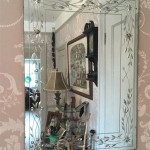Hanging Heavy Mirrors on Drywall
Hanging a heavy mirror on drywall can seem daunting, but with the right tools and techniques, it can be accomplished safely and securely. This article outlines the steps and considerations for successfully hanging a heavy mirror, ensuring both the mirror and the wall remain intact.
Key Considerations Before Starting
Several factors influence the best approach for hanging a heavy mirror. Careful planning is essential for a successful outcome.
- Weight of the Mirror: The weight of the mirror is the primary factor in determining the appropriate hanging method. Heavier mirrors require more robust hardware and potentially additional wall support.
- Mirror Size and Shape: Larger mirrors distribute weight differently than smaller ones. The shape of the mirror also impacts how it hangs and the stress points on the hanging hardware.
- Wall Construction: Standard drywall can support a moderate amount of weight, but very heavy mirrors might require additional support, such as wall anchors or mounting to wall studs.
- Location: Consider the location of the mirror. High-traffic areas might necessitate more secure hanging methods. Bathrooms and other humid environments require corrosion-resistant hardware.
Tools and Materials
Gathering the necessary tools and materials beforehand streamlines the hanging process.
- Stud Finder: Locating wall studs is crucial for providing the most secure support, especially for heavier mirrors.
- Level: Ensuring the mirror hangs straight is essential for aesthetics and stability. A level, preferably a longer one, is indispensable.
- Drill and Drill Bits: The appropriate drill bit size depends on the chosen hanging hardware and wall anchors (if used).
- Screwdriver: A screwdriver that matches the screws provided with the hanging hardware is necessary.
- Measuring Tape: Accurate measurements ensure proper placement and alignment of the hanging hardware.
- Pencil: Marking the wall for drilling and hardware placement ensures accuracy.
- Hanging Hardware: Choose heavy-duty D-rings, J-hooks, or French cleats rated for the weight of the mirror. Consider wire if using D-rings.
- Wall Anchors (if needed): If mounting to drywall without studs, choose appropriate wall anchors rated for the weight of the mirror. Toggle bolts, molly bolts, or heavy-duty drywall anchors are common choices.
- Safety Glasses: Protecting your eyes is crucial when drilling and working with hardware.
Locating Wall Studs
Hanging a heavy mirror on wall studs provides the most secure mounting. Use a stud finder to locate the studs in the desired location. Mark the stud locations with a pencil.
Choosing Appropriate Hanging Hardware
Selecting the correct hanging hardware is paramount for safety and stability.
- D-Rings and Wire: D-rings affixed to the back of the mirror and attached to picture wire create a traditional hanging method. Ensure the wire and D-rings are rated for the mirror’s weight.
- J-Hooks: J-hooks screwed directly into wall studs provide a robust hanging solution, especially for heavier mirrors. The hooks engage with pre-installed hardware on the back of the mirror.
- French Cleats: French cleats offer a strong and stable hanging system. One cleat attaches to the wall, and the other to the back of the mirror. They interlock, distributing weight evenly.
Installing Wall Anchors (If Necessary)
If mounting the mirror where studs are unavailable, use appropriate wall anchors. Ensure the anchors are rated for the weight of the mirror.
- Toggle Bolts: Toggle bolts are ideal for heavier mirrors as they provide a strong hold in hollow walls.
- Molly Bolts: Molly bolts are another option for hollow walls, expanding behind the drywall to create a secure anchor point.
- Heavy-Duty Drywall Anchors: These anchors are designed for heavier items and provide better support than standard drywall anchors.
Marking and Drilling
Precise measurements and careful drilling are crucial for proper installation.
- Mark Hardware Locations: Measure and mark the locations for the hanging hardware on the wall, ensuring they align with the hardware on the back of the mirror.
- Drill Pilot Holes: Drilling pilot holes before inserting screws prevents the drywall from cracking and makes screw insertion easier, particularly when using wall anchors.
Hanging the Mirror
With the hardware installed, carefully hang the mirror, ensuring it is level and secure.
- Positioning the Mirror: Carefully lift the mirror and position it onto the installed hardware. Enlist help if the mirror is large or heavy.
- Checking for Stability: Once the mirror is hung, gently test its stability by applying slight pressure to ensure it is securely mounted.
Final Adjustments
After hanging, make any necessary adjustments to ensure the mirror is perfectly positioned and level.
- Leveling: Use a level to confirm the mirror hangs straight. Adjust the hardware as needed.
- Securing: Double-check all connections and hardware to ensure the mirror is securely mounted.

How To Hang A Heavy Mirror On Drywall Stas Picture Hanging Systems
How To Hang A 100 Pound Mirror On Drywall Quora

How To Hang A Large Or Heavy Mirror

How To Hang A Very Heavy Picture Or Mirror The Best

How To Hang A Heavy Mirror Diy Family Handyman

A Better Way To Hang Heavy Mirror Hanging Pictures

How To Hang A Heavy Mirror Or Picture True Value

How To Hang A Heavy Mirror With French Cleat

How To Hang A Heavy Mirror

How To Hang A Heavy Mirror C R F T

